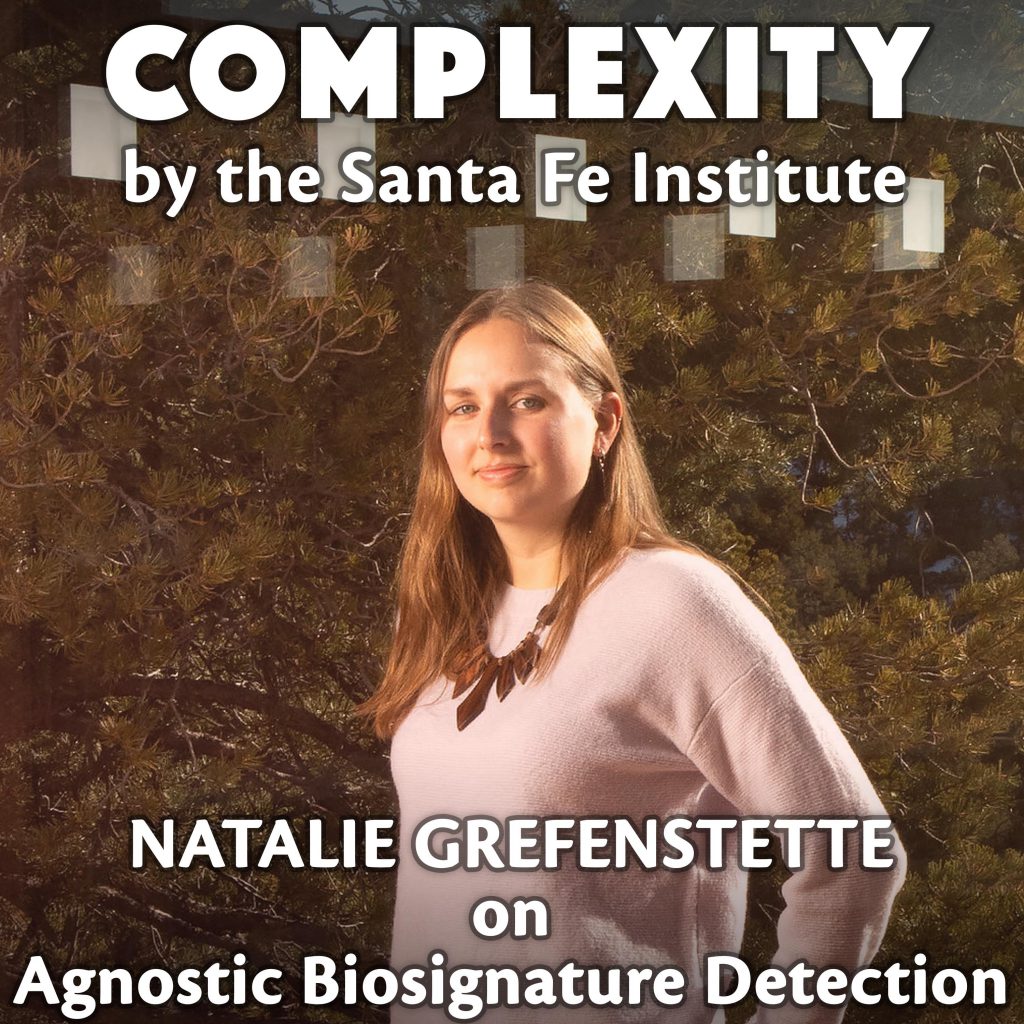Dr. Natalie Grefenstette and her Innovative Research on Polymer Evolution
By Elisabeth Lee
How did life as we know it begin? What makes the cells in our bodies different from the cells in the wood in something like a desk? These are questions that excite scientists and non-scientists alike. For scientists like Dr. Natalie Grefenstette, these are the questions that drive her research and for others, such questions can be a conduit of interest into a field that may not be familiar to them.
As an undergraduate student myself, I have not really yet immersed myself in a research environment to test scientific questions first-hand. However, recently I was given the opportunity to interview Grefenstette on her research in astrobiology and prebiotic chemistry, providing me with a newfound appreciation for scientists’ work and the complex questions they tackle. Grefenstette’s journey presents a unique perspective on her current research on polymer evolution within the field of astrobiology.
Originally born in the US but raised in France, Grefenstette received a hybrid British-American and French education through an international school based in France. This forced her to take a broad range of subjects although she was always interested in her science classes. She reflects, “I have always been interested in understanding life, and how it started or could start in different environments.” Grefenstette grew up in a scientific family, but her father in particular encouraged her into the astrobiology field, catalyzing her passion for science. After high school, Grefenstette went on to complete her undergraduate studies in biochemistry and graduate studies in prebiotic chemistry both at the University College London. It was at UCL where her interests narrowed down even further and she wished to focus more on astrobiology. As a postdoc now, Grefenstette has centered her focus around polymer evolution using computational modeling.
Grefenstette is a postdoc at the Santa Fe Institute where she is working on the multi-institutional, NASA-funded Agnostic Biosignatures project. Agnostic biosignatures are “signatures of life generally without any pre-supposing chemistry” or in simpler terms “used to understand how to search for life elsewhere when we don’t know what we’re looking for”, according to Grefenstette. Within the agnostic biosignature field, she is interested in advancing the world’s understanding of universal biology by pursuing research within two projects. Her first project involves mass spectrometry, a technique that measures the mass-to-charge ratio of molecules in a sample, which she uses to look for signatures that might be universal to life. Grefenstette delves into this research by stating, “[We are] assuming polymers are important to all life forms because we use it heavily in our biology. Instead of looking for DNA or proteins or very specific structures that we associate with life, [we] look for this polymer structure”. Under Grefenstette’s second project, she looks at polymer evolution in trying to understand how a specific physicochemical environment produces polymers that can form populations and change over time. She asks the question, “are there any signatures in that population that can be reflective of the environment it came out of?” Typically, in the journey to answering this question some scientists would conventionally experiment with chemistry; however, Grefenstette executes her research with a more unique technique.

With ever growing technological advances, astrobiology research has incorporated computational modeling alongside the typical experimental methods of chemistry in the laboratory. Utilizing coding languages in this type of research is more powerful, according to Grefenstette. She believes it shouldn’t be completely independent of experimentation; rather, that with the amalgamation of both methods, the research process is not only more practical, but also efficient. In Grefenstette’s research, the computational models will recreate different versions of an environment in order to produce polymers (or in this case strings of zeros and ones). After getting involved in computing, Grefenstette’s logic-oriented brain has grown very fond of this side of astrobiology and has, thus, enhanced her love for astrobiology overall.
While Grefenstette has accomplished astounding research, like any other researcher, obstacles are inevitable. Grefenstette faced some challenges throughout her PhD and has even faced others more recently in her post-doc. Recently, she recognized a flaw in the computational model after producing many, many results and therefore had to adjust her model and recreate all of her products. Despite these frustrating problems, acknowledging the problems allows for more reliable results: “The day you realize that you have to redo the research is a hard day, but I agreed [that] it needed to be redone and so now we have a stronger hypothesis and stronger research,” Grefenstette stated. She speaks on her past experiences, encouraging younger students to expect and accept the challenges that will eventually come their way. Grefenstette additionally encourages aspiring scientists to not underestimate the power of an email. Reaching out to professors and scientists or attending conferences can promote unexpected opportunities.
As a younger student myself, being able to hear from Dr. Natalie Grefenstette was truly a pleasure. At the end of our interview, we bonded over our shared hobbies of baking and embroidery. BMSIS is fortunate to have a multi-faceted and adept researcher like Natalie. Her research will help the world come closer to answering questions surrounding the origin of life and the complexity of environments that cause differences between the cells of our body and the cells that make up our desks.
Elisabeth Lee is an undergraduate student studying human biology at Cornell University. On campus, she works on the E-board of Cornell Undergraduate Research Board and is a dancer in the Impact Dance Troupe. Fueled by hands-on experiences, she aspires to work in the healthcare field and serve those in her community, while maintaining her life-long passion for ballet.
